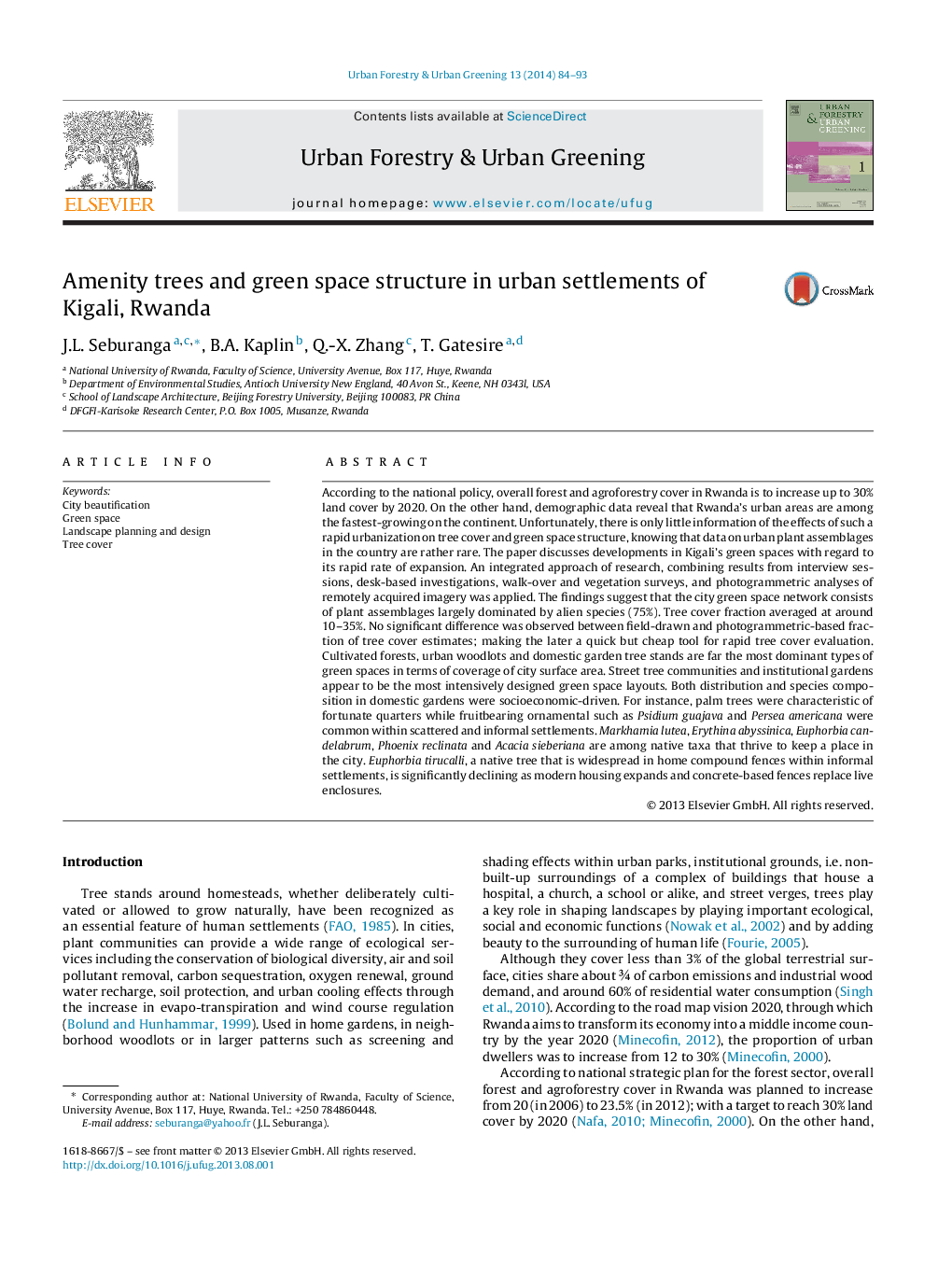| کد مقاله | کد نشریه | سال انتشار | مقاله انگلیسی | نسخه تمام متن |
|---|---|---|---|---|
| 93994 | 160246 | 2014 | 10 صفحه PDF | دانلود رایگان |
According to the national policy, overall forest and agroforestry cover in Rwanda is to increase up to 30% land cover by 2020. On the other hand, demographic data reveal that Rwanda's urban areas are among the fastest-growing on the continent. Unfortunately, there is only little information of the effects of such a rapid urbanization on tree cover and green space structure, knowing that data on urban plant assemblages in the country are rather rare. The paper discusses developments in Kigali's green spaces with regard to its rapid rate of expansion. An integrated approach of research, combining results from interview sessions, desk-based investigations, walk-over and vegetation surveys, and photogrammetric analyses of remotely acquired imagery was applied. The findings suggest that the city green space network consists of plant assemblages largely dominated by alien species (75%). Tree cover fraction averaged at around 10–35%. No significant difference was observed between field-drawn and photogrammetric-based fraction of tree cover estimates; making the later a quick but cheap tool for rapid tree cover evaluation. Cultivated forests, urban woodlots and domestic garden tree stands are far the most dominant types of green spaces in terms of coverage of city surface area. Street tree communities and institutional gardens appear to be the most intensively designed green space layouts. Both distribution and species composition in domestic gardens were socioeconomic-driven. For instance, palm trees were characteristic of fortunate quarters while fruitbearing ornamental such as Psidium guajava and Persea americana were common within scattered and informal settlements. Markhamia lutea, Erythina abyssinica, Euphorbia candelabrum, Phoenix reclinata and Acacia sieberiana are among native taxa that thrive to keep a place in the city. Euphorbia tirucalli, a native tree that is widespread in home compound fences within informal settlements, is significantly declining as modern housing expands and concrete-based fences replace live enclosures.
Journal: Urban Forestry & Urban Greening - Volume 13, Issue 1, 2014, Pages 84–93
